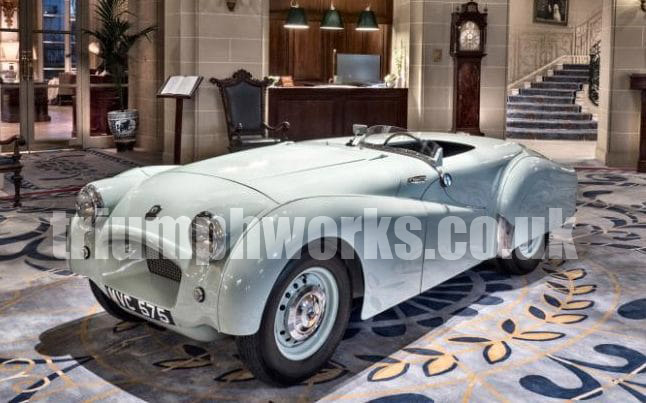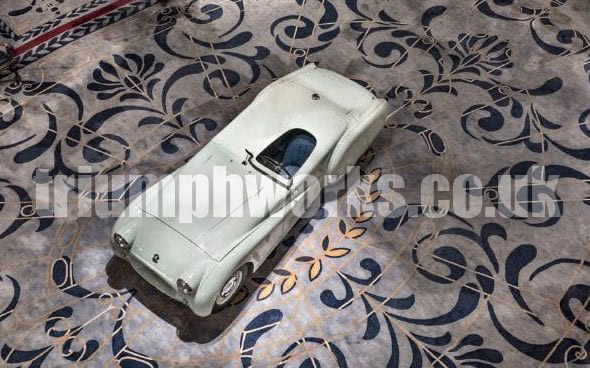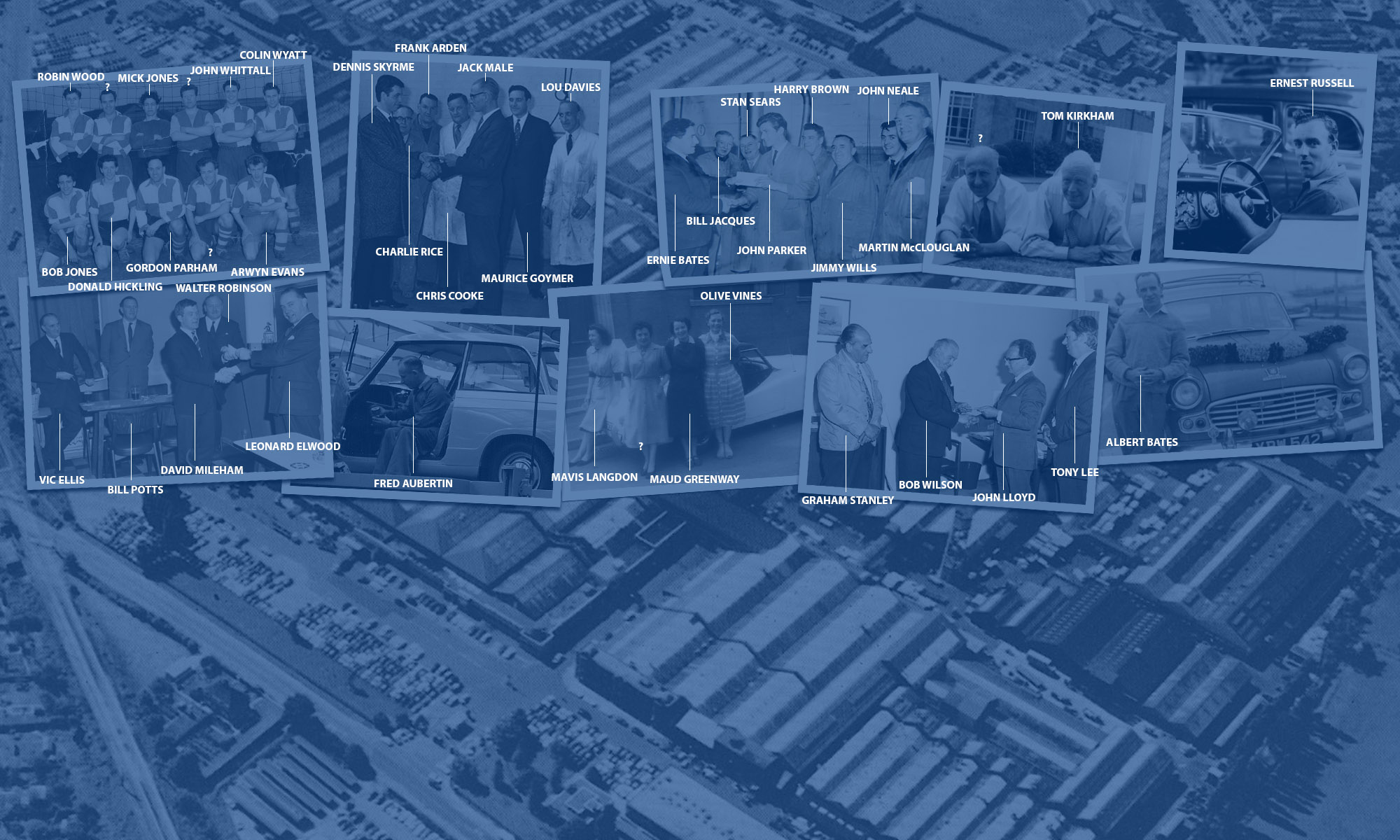A unique piece of Triumph history has gone on display at the RAC Club in Pall Mall, London, this week. There aren’t many bits of early Triumph TR history left. Of the genesis of the Standard Triumph range of sports cars, from TRs to Spitfires, Stags and GT6s, we have little to point at and say, “That’s the start of it all”
Some of the rally and racing cars exist, but of the 1952 20 TS (later known as TR1) prototypes – most historians now concede that there were two – with their horrible flexible chassis and slug-like Vanguard engines, there has been no sign. It wouldn’t have been surprising if they’d been consigned to the scrap bin after the press moaned about terrible handling and Ken Richardson, BRM’s experienced test driver, described the car as “bloody awful”.

But after a year of work on the original car, with Harry Webster improving the chassis, Lewis Dawtrey coaxing a reliable 90bhp out of the wet-liner engine, Walter Belgrove redesigning the body with a longer tail and Richardson test-driving it, the resulting TR2 was unveiled in March 1953 at the Geneva motor show.
With Sunbeam, Austin-Healey and MG all competing for the lucrative American sports car market, there was no time or money to waste as Sir John Black, Standard Triumph’s managing director, pushed his team to get the TR2 into production.
To create a legend for their new car, just two months before it began production at Canley, Black asked Richardson to prepare a car to set a new speed record at the Jabbeke highway in Belgium. Jabbeke was a bit like the Nurburgring Nordschleife for today’s hot-hatch makers, and Rootes had already set a 120mph top speed there with a much-modified Sunbeam Alpine.
Richardson had a pre-prototype car, registered MVC 575, prepared with a set of optional streamlining parts including an undershield, rear-wing spats, and a metal cockpit cover and in May 1953, on a closed road and in front of the press, he attained a speed of 124.899mph, quite astounding for a 2.0-litre car of the time and faster than its Austin-Healey and Sunbeam rivals.
History records that Richardson sat on the floor of the car shielded from the wind blast behind a tiny aero screen. Brave men they were back then.
Like so many of its forebears, MVC was used as a test department hack in the factory and was eventually sold on and driven gradually into the ground until it was eventually dismantled with the intention of a restoration in 1976.
It was in that boxed but dilapidated state that it was purchased a couple of years ago by Glen Hewett of Protek Engineering in Wallingford. Not one to hang around, Hewett got stuck into the restoration of this famous old light-green (the colour is called geranium, apparently* see below) charger and in the process discovered riveted rear panels, hand-fabricated sections and a number of other clues that have led him and a number of experts, including author and historian Bill Piggott, that it is in fact one of the long-lost TR1 prototypes rebodied with a new tail for Richardson’s record attempt.
“I’m convinced that it is a TR1,” says Jeff Marks of Moss Europe, which helped sponsor the restoration.
“Nothing is written in stone,” says the irrepressible Hewett, “but there were so many special bits, especially at the rear, that I think it must be TR1 and three-quarters. They couldn’t afford to throw things away in those days.”

So not only is MCV 575 a very important car in its own right, but it’s most likely two very important cars in one and a missing link for one of the most successful series of sports cars ever to have been produced, vying with MG in the hearts of the all-important US market.
And so, after a month on display in Moss Europe’s London showroom, last week MCV 575 went on display in the rotunda of the RAC Club on Pall Mall. How so? Tom Purves, chairman of the RAC Club is also a TR owner – the former head of BMW UK and Rolls-Royce hillclimbs his Hewett-prepared TR3a with some success. He has instigated a programme of showing various important cars in the rotunda and few could deny that MCV 575 is important.
“I like Triumph for personal reasons,” he explained last week at a dinner given in honour of Hewett’s work and all the people who have contributed to the project. “I think they did a good job exploiting their export potential and later they were very avant garde in using Michelotti, the Italian design house. It’s an unappreciated part of the British motor industry.”
As a footnote, it’s interesting that Purves’s former employer, BMW, still owns the Triumph name from when it controlled Rover.
“We did quite a lot of research work on the viability of Triumph and Riley in the US when I was at BMW,” says Purves. “There was still a fair bit of recognition for Triumph, but not for Riley.”
So would BMW ever think about relaunching Triumph? “There are certainly no plans at BMW to do that and it’s far too busy with Mini and Rolls-Royce to consider it,” he said. “But I’m not so sure that BMW wouldn’t consider selling if the right approach was made and it looked like a viable project that would do justice to the marque…”
It’s an intriguing thought, especially when you see this lovely old TR2 record-breaker looking as wonderful as it ever has.
* A nice article on the Jabbeke TR2MVC575 – the most significant of all Triumph TR’s. One small correction to the article. The car colour is Ice Blue – not Geranium. The wife of Lord Brown was responsible for the colours used on the very early TR2’s and she came up with some quite unusual colours for the first year of production (including Ice Blue and Geranium) before the marketing department prevailed and subsequent cars were the usual red, BRG, white, light blue options used by all manufacturers at the time. Kind regards. Richard Owen

